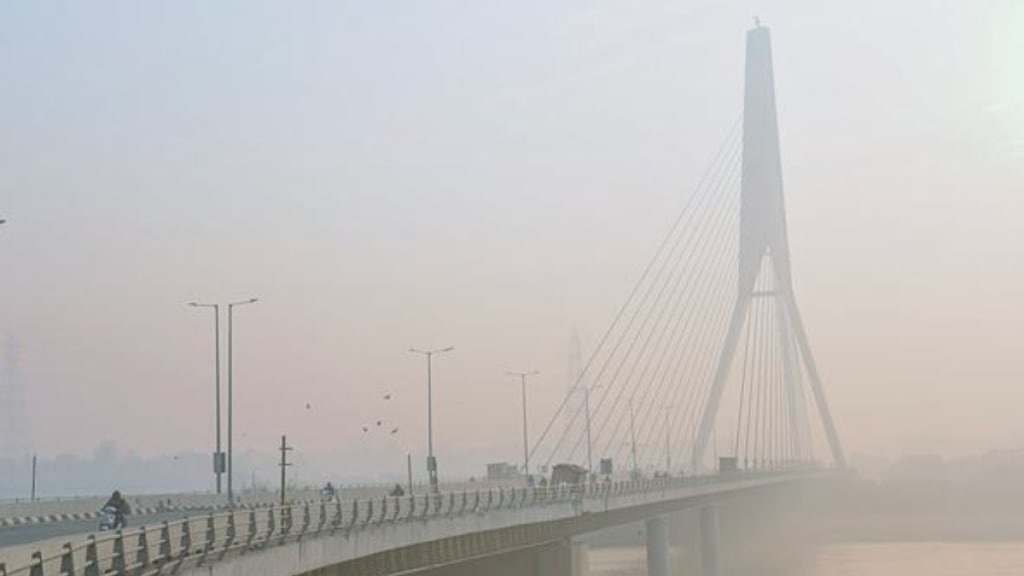Delhi AQI today: Delhi’s air quality deteriorated further on Tuesday, slipping from the “very poor” to the “severe” category. Data from the Central Pollution Control Board (CPCB) showed the city’s AQI stood at 423 as of 9 am. The Centre has imposed Graded Response Action Plan (GRAP) Stage 3 curbs in Delhi-NCR, including a ban on non-essential construction work.
Delhi Pollution: Grap-III measures
The implementation of Stage III curbs also includes a closure of stone crushers and mining activities, in addition to the actions already enforced under Stages I and II of GRAP. Classes up to Class 5 are required to shift to hybrid mode under Stage 3.
Under Stage 3, the use of BS-III petrol and BS-IV diesel cars (4-wheelers) is restricted in Delhi and nearby NCR districts. Specially-abled people are exempt under the Grap-III measures.
GRAP categorises air quality into four stages – Stage I (Poor, AQI 201-300), Stage II (Very Poor, AQI 301-400), Stage III (Severe, AQI 401-450), and Stage IV (Severe Plus, AQI above 450).
Delhi AQI crosses 400 mark
As of 7 am, Delhi’s most polluted locations included Bawana (462), Wazirpur (460), Mundka (450), Punjabi Bagh (451), Rohini (451), Jahangirpuri (448), Nehru Nagar (448), Mathura Road (447), Dwarka Sector-8 (445), and Anand Vihar (442). All these areas recorded “severe” air quality levels.
Other monitoring stations such as Shadipur (388), DTU (371), Dilshad Garden (293), Lodhi Road (288), and NSIT Dwarka (228) continued to report AQI readings in the “very poor” category on Tuesday morning.
As of 9 am, air quality across major Indian cities ranged from moderate to poor, according to CPCB data. Bengaluru (130), Chennai (122), Hyderabad (104), Mumbai (124), Pune (104), Lucknow (188), and Patna (197) recorded moderate air quality, while Ahmedabad (206) and Jaipur (212) fell into the poor category.
According to the CPCB’s air quality classification, an AQI score of 0-50 is categorised as good, 51-100 as satisfactory, 101-200 as moderate, 201-300 as poor, 301-400 as very poor, and 401-500 as severe.
Delhi-NCR AQI on November 9
| City/Town | Index Value | Air Quality |
|---|---|---|
| Delhi | 370 | Very Poor |
| Bhiwani | 252 | Poor |
| Charkhi Dadri | 338 | Very Poor |
| Faridabad | 214 | Poor |
| Ballabgarh | 130 | Moderate |
| Gurugram | 238 | Poor |
| Manesar | 270 | Poor |
| Bahadurgarh | 436 | Severe |
| Jind | 302 | Very Poor |
| Karnal | 255 | Poor |
| Narnaul | 204 | Poor |
| Mandikhera | 74 | Satisfactory |
| Palwal | 192 | Moderate |
| Panipat | 252 | Poor |
| Dharuhera | 262 | Poor |
| Rohtak | 323 | Very Poor |
| Sonipat | 251 | Poor |
| Alwar | 104 | Moderate |
| Bharatpur | 164 | Moderate |
| Bhiwadi | 296 | Poor |
| Baghpat | 308 | Very Poor |
| Bulandshahr | 310 | Very Poor |
| Khurja | 327 | Very Poor |
| Noida | 366 | Very Poor |
| Greater Noida | 340 | Very Poor |
| Ghaziabad | 345 | Very Poor |
| Hapur | 331 | Very Poor |
| Meerut | 353 | Very Poor |
| Muzaffarnagar | 305 | Very Poor |
What different AQI levels mean for your health
According to the CPCB, “Good” air quality poses minimal health risks and has little to no impact on the general population. When air quality is classified as “Satisfactory,” it may cause slight breathing discomfort to sensitive groups such as children, the elderly, and individuals with existing respiratory conditions.
A “Moderate” AQI level can lead to breathing issues among people with lung diseases, asthma, or heart ailments. As air quality deteriorates to the “Poor” category, prolonged exposure may cause discomfort for most individuals.
In the “Very Poor” range, long-term exposure can trigger respiratory problems even in otherwise healthy people. At the most critical stage, “Severe,” air pollution can impact healthy individuals and pose serious health risks to those with pre-existing medical conditions.


